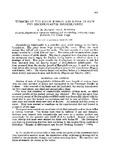| dc.contributor.author | MUGERA, GM | |
| dc.contributor.author | NDERITO, P | |
| dc.date.accessioned | 2015-07-28T15:43:22Z | |
| dc.date.available | 2015-07-28T15:43:22Z | |
| dc.date.issued | 1968 | |
| dc.identifier.citation | Br J Cancer. 1968 Sep; 22(3): 563–568. | en_US |
| dc.identifier.uri | http://www.ncbi.nlm.nih.gov/pmc/articles/PMC2008373/ | |
| dc.identifier.uri | http://hdl.handle.net/11295/89076 | |
| dc.description.abstract | Encephalartos hildebrandtii is a palm-like plant which belongs to the family Cycadaceae. The plant bears large pineapple-like cones. When the cones
mature they fall off and expose the seeds. The seed consists of a hard nut-like
kernel covered by a thick flesh-redlayer. The stems and the seeds of the plants provide a source of edible starch. The starch prepared from this plant is used as
an emergency starch supply for families during famine or wherever there is a
shortage of food. This paper records the development of tumours in rats fed
flour prepared from the starchy kernel of Encephalartos hildebrandtii. The flour prepared from the starchy kernel ofEncephalartos spp. is used by man in
East Africa after several stages of preparation to remove the toxic factors (Mugera and Nderito, 1967). The starchy kernel and its flour before it is detoxicated with
water is very poisonous to man and livestock (Mugera and Nderito, 1967). | en_US |
| dc.language.iso | en | en_US |
| dc.title | Tumours of the liver, kidney and lungs in rats fed encephalartos hildebrandtii | en_US |
| dc.type | Article | en_US |
| dc.type.material | en_US | en_US |

